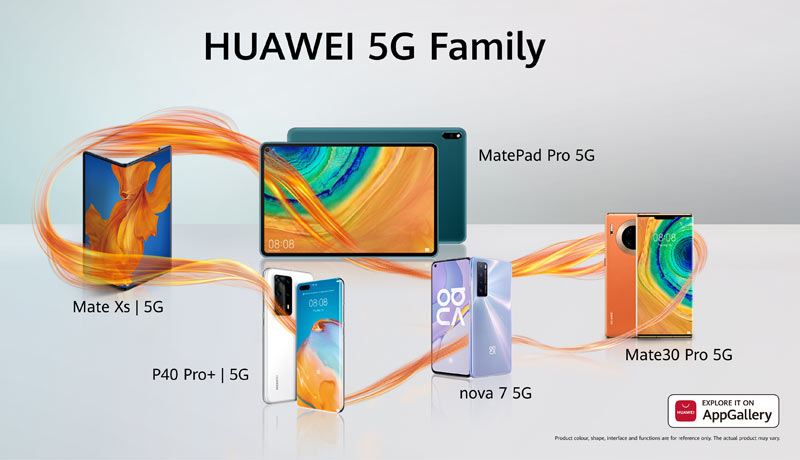
Huawei has recently introduced in the UAE a myriad of products including smartphones and tablets which are capable of providing 5G networking solutions to its users. Be it flagship smartphones, mid-range smartphones or even tablets, incorporating 5G networking into a wide variety of devices makes this feature accessible for a variety of users, allowing everyone to enjoy high speed and stable network connectivity, no matter what device they use.
On a more practical note, 5G technology also paves the way for everyday applications, with its faster data capabilities allowing for quicker and more efficient processing in fields such as medicine, healthcare, security and many more. The importance of connectivity in today’s world is crucial and with 5G technology, staying constantly connected is easy and stable.
Investing more than 4 billion USD in 5G research between 2009 and 2019, Huawei has done massive research into developing all aspects of 5G technology, be it chipset, materials, algorithms, antenna, cooling and many more. This is evident in Huawei owning more than 20% of all 5G standard essential patents and his resulted in Huawei shipping more than 15 million 5G smartphones worldwide in Q1 of 2020.
When it comes to 5G technology and development however, the key element lies in the chipsets. Huawei focused on chipsets that not only promised faster and efficient performance at low temperatures but, also brought to the table capability for both NSA (Non-Standalone) and SA (Standalone) 5G networking. In simply terms, NSA networks are the first wave of 5G networks and are supported by existing 4G infrastructure. However, in the future, there will be a switch to 5G standalone (SA) network, which is the ultimate 5G proposal with faster speeds and stable connections. Essentially, this means smartphones that only support NSA networks, once the migration to SA takes place, will not work. However, thanks to its capability to support both NSA and SA networks, Huawei devices will make the transition seamless, allowing for powerful 5G performance no matter the region or stage of 5G development.
The integration of this chipset into Huawei’s wide range of devices, have resulted in a powerful lineup of 5G enabled devices. This powerful 5G family includes the HUAWEI Mate 30 Pro 5G, HUAWEI Mate Xs 5G, HUAWEI MatePad Pro 5G, HUAWEI P40 Pro+ 5G and the latest addition, the HUAWEI nova 7 5G.
The newly launched HUAWEI nova 7 5G also follows suit, thanks to its 5G prowess that gives it a competitive edge in the mid-range segment as it is dubbed a “Trendy Flagship”
The HUAWEI nova 7 5G is more than just 5G connectivity, it is also a perfect mid-range champion thanks to strong camera features and performance. Photographers can enjoy the 64MP Hi-res AI Quad Camera system for hi-res photography and videography in all conditions. The setup consists of a 64MP main camera, 8MP ultra-wide camera, 8MP telephoto camera and a 2MP macro camera, which work together to support a wide range of shooting scenarios, including low light conditions and bright outdoors. It also supports 3x Optical zoom, 5x hybrid zoom and up to 20x digital zoom. Users can also enjoy DUAL-VIEW Video Mode, which allows users to use two different cameras at the same time to capture videos from both sides. The HUAWEI nova 7 5G is powered by the Kirin 985 5G chipset, which also ensures efficient performance with enhanced AI prowess. Long lasting battery life is also ensured thanks to the massive 4000 mAh battery, supported by the 40W HUAWEI SuperCharge to charge up to 75% battery in just 30 minutes.